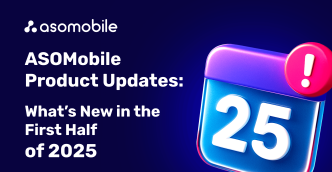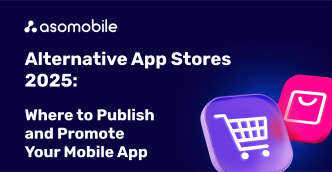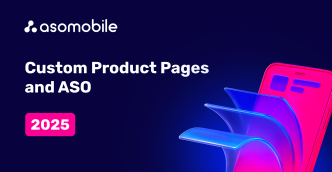Keyword Strategy in the App Store and Google Play
The keyword strategy is the foundation of ASO. It’s the starting point for any app on its path to high visibility, stable traffic, and ultimately, more installs. Without the right keywords, even the most beautiful interface and useful features can go unnoticed.
Working with semantics isn’t just about picking meaningful words. It’s a strategic process that considers product stage, competition, user behavior, and store requirements. This is especially important in competitive niches like mobile games and utility apps, where a single phrase can determine whether you or your competitor ranks first.
Where to find keywords? Which ones actually drive installs rather than just traffic? How do you place them in metadata and localize them effectively? And what happens when your app grows and it’s time to scale?
Let’s break down how to build a keyword strategy in ASO in 2025, using clear language and real examples.
Keyword Typology
Getting started with keywords may seem like just collecting as many search queries as possible. But it’s important to understand the types of keywords and how to use them properly. Each plays a role: some focus on precision and conversion, others on reach and awareness. For clarity, we divide keywords into the following types:
Highly Relevant – the foundation of your semantic core
These are the exact phrases users type when they already know what they’re looking for - and are likely to install your app if it matches. Start your semantic work with these; they bring high-quality traffic and strong conversions.
Examples: home fitness, weight loss workouts, pilates for beginners, cardio at home
Related – expand reach and test adjacent niches
These don’t describe your app directly but are connected to your audience’s interests. For example, someone might search for ways to lose weight quickly, not a fitness app - but your app could still be the right fit.
Examples: lose weight fast, healthy lifestyle, clean eating, get rid of belly fat
These keywords help expand your reach and explore new or adjacent categories.
Broad (Category) – visibility and branding
These are general terms with high search volume but unclear intent. “Sport” could mean a running tracker, workout videos, or an interval timer.
They bring large traffic but low conversion. Still, they’re useful for brand awareness and increasing your presence in search results.
Examples: sports, health, exercises, physical activity
Typos – unexpected traffic sources
Users make typing errors, especially on phones. These mistakes can be accounted for.
Examples: fitnes, workuot, mediatation
Competitor Brand Keywords – grabbing attention
Use with caution, especially in competitive markets, where autocorrect will often override them.
If your app can replace a competitor, consider indexing for their brand name - especially if their users aren’t deeply loyal (like in VPNs, photo editors, utilities).
You can use such keywords:
- In Google Play reviews (indexed)
- In ASA (Apple Search Ads) by targeting competitor brand names
- Carefully in metadata (avoid phrases like “better than X”)
In brand-loyal niches (social networks, streaming, Duolingo), this strategy likely won’t work.
Using brand keywords is risky. Be aware of possible consequences.
How to Choose Keywords – 3 evaluation criteria
Every keyword - even a popular one - must be evaluated not just by traffic but by the balance of three factors:
- Popularity – how often it’s searched
- Relevance – how well it fits your app
- Ranking Difficulty – how many and how strong the competitors are
Sometimes, a lower-traffic but highly relevant keyword gives better results than fighting for a top spot on a competitive term.
In the end, a good ASO semantic core is a layered system where each keyword type plays a role - from driving installs to boosting brand awareness.
Keyword Work = Product Growth Strategy
Why keywords aren’t just a list
At launch, you may think it’s enough to gather relevant terms and insert them into metadata. But strategy matters more. Each app stage has different goals and keywords. ASO is a journey, not a one-time action. There are three key phases:
- Launch – Start indexing with low-frequency, low-competition keywords.
- Growth – Add mid-frequency and selectively high-competition terms.
- Scaling – Target high-volume queries, boost rankings, strengthen your brand.
What matters at launch?
In early stages, your goal is to show up. Skip keywords like fitness or photo editor — they’re too competitive. Focus on long-tail queries: more specific, less competitive, and still in demand.
Examples:
- guided meditation for sleep
- fitness app for moms at home
- budget tracker with family sharing
They’re entered less often but convert well and can help you start ranking.
Autocomplete – insights from users
Autocomplete suggestions in the App Store and Google Play reveal what users are really typing and how.
The higher a suggestion appears, the more traffic it likely has. If it shows up after 2–3 letters, it’s highly relevant.
Check different phrasing options - e.g., workout app might also show workout app for women, at home, 7 minute workout - each can be its own growth point.
When your app grows
Once you’re getting stable organic installs, it’s time to grow:
- Explore adjacent topics your users care about
- Analyze competitor keywords
- Cluster keywords by theme (home workouts, posture, nutrition)
- Use autocomplete and suggestion tools
This increases your entry points and audience reach.
How to find new keyword clusters
When your core keywords are stable, expand into adjacent topics.
Group keywords by meaning - for example: home workouts, women’s health, sleep meditation, posture, healthy recipes. Treat each group as a separate growth area and test it.
Check niche apps and store suggestions for underused themes. Competitors often provide inspiration.
Localization as a growth point
Once your app is stable, localization is the next logical step - not just UI translation, but keyword localization.
App Store: use cross-locales
Some countries (like the US) support up to 10 locales. For example:
English (US), Spanish (Mexico), Russian, French, Arabic, Chinese (Traditional & Simplified), Korean, Vietnamese, Portuguese (Brazil)
Even if your UI is in English, you can fill metadata fields in other languages to expand your reach.
Strategy tip: Use native language for titles, but English keywords in metadata for broader US indexing.
Avoid mixing languages in a single field (e.g., AI retouche magique background remover looks untrustworthy).
Google Play: language-first logic
In Google Play, indexing is language-based - not region-based. Google auto-translates, but manual localization is more accurate.
Example: organize (US) vs. organise (UK); editor de fotos (Spain) vs. editor de imágenes

Tips:
- Never auto-translate keywords
- In App Store: avoid duplicate keywords across locales
- In Google Play: update metadata gradually
- Keep keyword density under 3%
- Use tools like Worldwide Check, Text Analyzer for each locale
Localization = adapting to the audience’s language and mindset.
When the brand is already known: scaling
If users search for your brand, leverage this:
- Index for broader, high-traffic terms (home fitness, meditation app, budget tracker)
- Protect your brand with abbreviations, transliterations, old names, and typo variants
A strong brand doesn’t just retain users - it helps conquer new competitive terms.
Seasonality & Trends

Seasonal events (New Year, Black Friday, Easter, back-to-school) are perfect moments to refresh your metadata.
Examples:
- Summer workout for fitness
- Halloween games for gaming
- Black Friday deals for e-commerce
- Storm tracker for weather apps
Add seasonal keywords at least 2–3 weeks in advance to get indexed.
Tools That Help
To simplify keyword work and test hypotheses, use ASOMobile’s tools, which support you at every stage:
- Keyword Finder – find long-tail terms
- Update Timeline – track changes
- Keyword Select – explore clusters and similar phrases
- Suggest Checker – validate autocomplete
- Worldwide Check – monitor indexing by locale
- Text Analyzer – analyze keyword density
- ASO Dashboard – track rankings, competition, traffic
These tools help you build and fine-tune your strategy as the market evolves.
Final Thoughts
ASO isn’t a sprint - it’s a marathon. You need to monitor analytics, test hypotheses, discover new keywords, listen to users, and revise your strategy when needed.
With ASOMobile, you can go beyond picking keywords - analyze performance, track competitors, test localizations, and build a full growth strategy.
 Українська
Українська  Русский
Русский  Español
Español 






